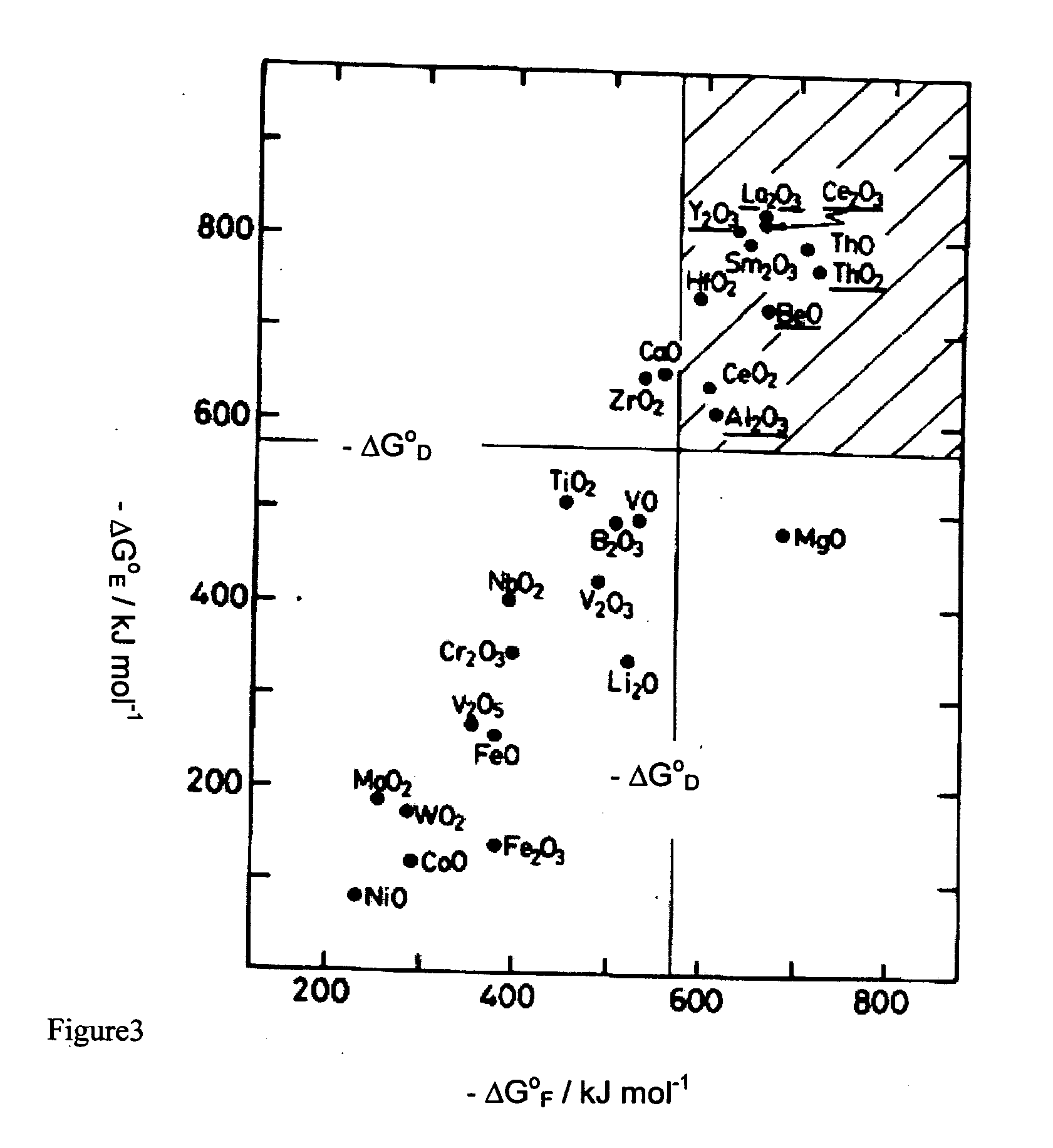Compositions for improved ceramic armor
- Summary
- Abstract
- Description
- Claims
- Application Information
AI Technical Summary
Benefits of technology
Problems solved by technology
Method used
Image
Examples
Embodiment Construction
[0031]To improve the performance of Silicon Carbide for ballistic applications, Applicants produced composites from starting composition SiC+sintering additive+ZrO2 that reacts to SiC+ZrC. ZrO2 is one of several metal or transition metal oxides that form stable carbides when reacted with SiC at high temperatures. ZrC has moderate strength, high hardness, and high toughness. ZrC, though not used as a ballistic material, because of high density and cost, shares some of the characteristics of an armor material in showing good strength with high hardness. In limited studies, ZrO2 / ZrC has been added to SiC in amounts of greater than 5 wt. % for the purposes of toughening. It should be noted that the reaction of ZrO2 to ZrC reduces the molecular weight of the zirconium containing compound from 123.2 g to 103.2 g and the molar volume from 22 cc to 15.3 cc. As such, this reaction has the effect of reducing the weight and volume percent of zirconium containing compound.
[0032]In this work, it...
PUM
| Property | Measurement | Unit |
|---|---|---|
| Fraction | aaaaa | aaaaa |
| Fraction | aaaaa | aaaaa |
| Fraction | aaaaa | aaaaa |
Abstract
Description
Claims
Application Information
 Login to View More
Login to View More - R&D
- Intellectual Property
- Life Sciences
- Materials
- Tech Scout
- Unparalleled Data Quality
- Higher Quality Content
- 60% Fewer Hallucinations
Browse by: Latest US Patents, China's latest patents, Technical Efficacy Thesaurus, Application Domain, Technology Topic, Popular Technical Reports.
© 2025 PatSnap. All rights reserved.Legal|Privacy policy|Modern Slavery Act Transparency Statement|Sitemap|About US| Contact US: help@patsnap.com



